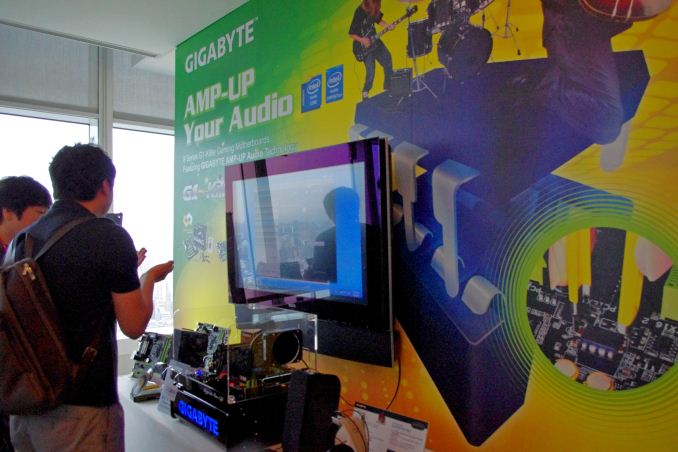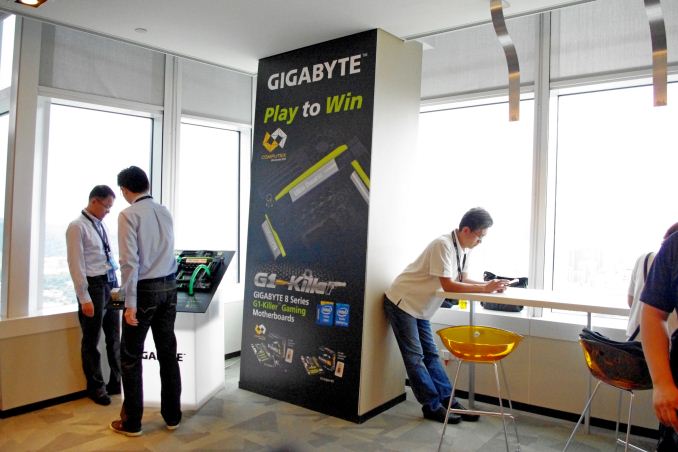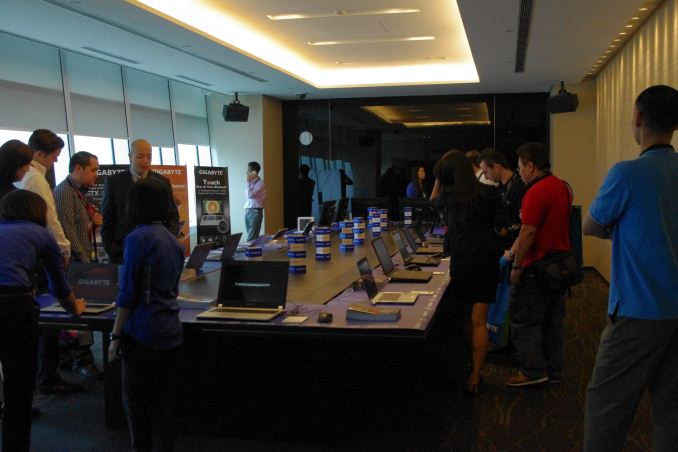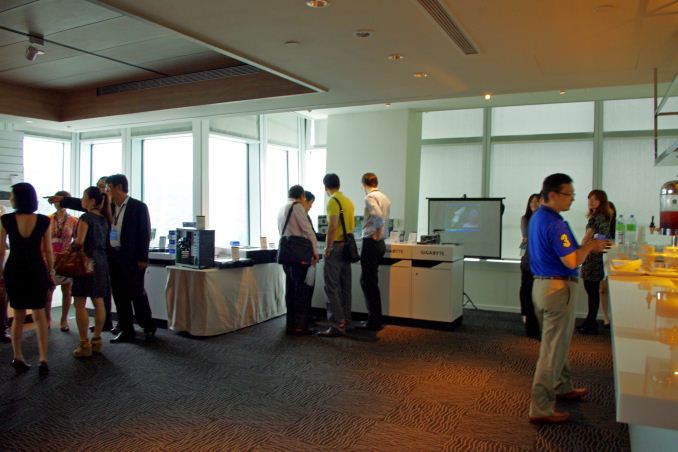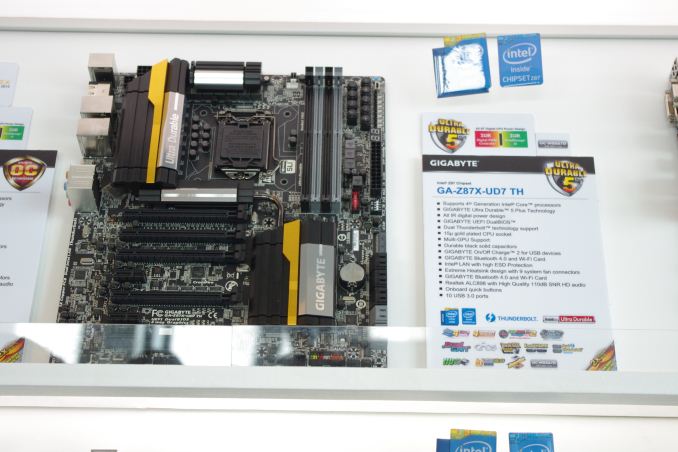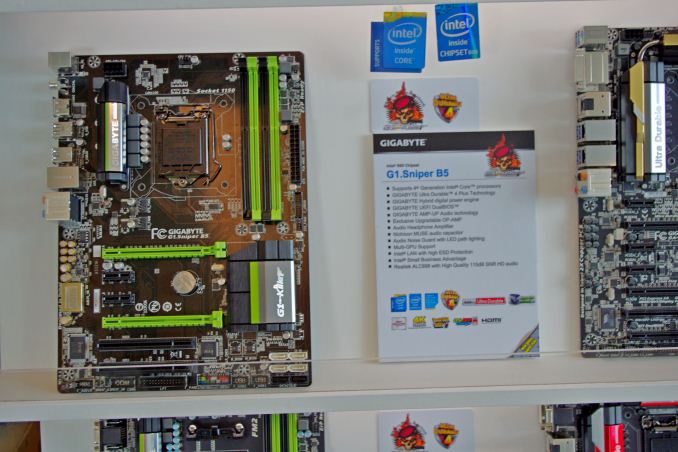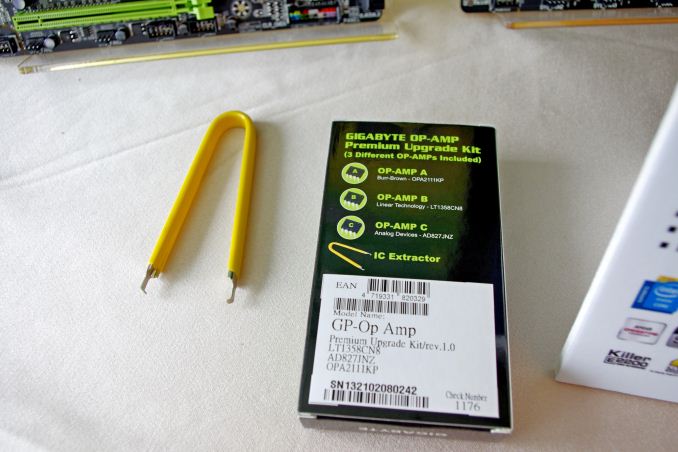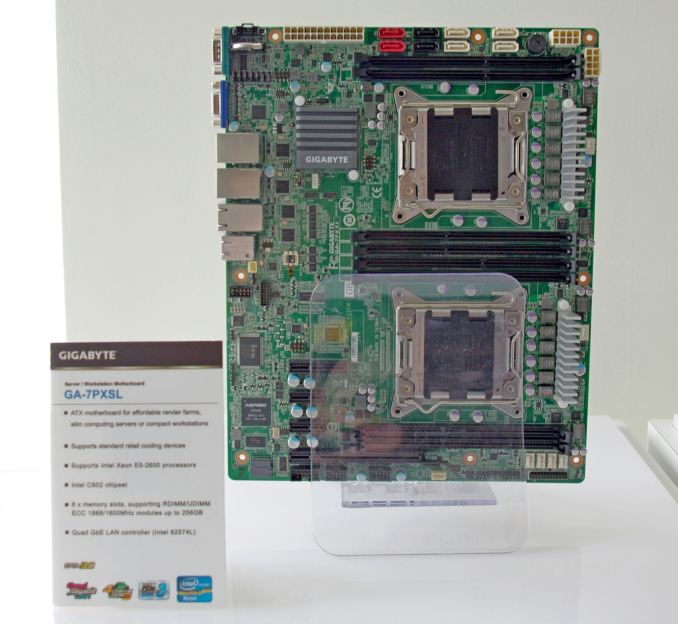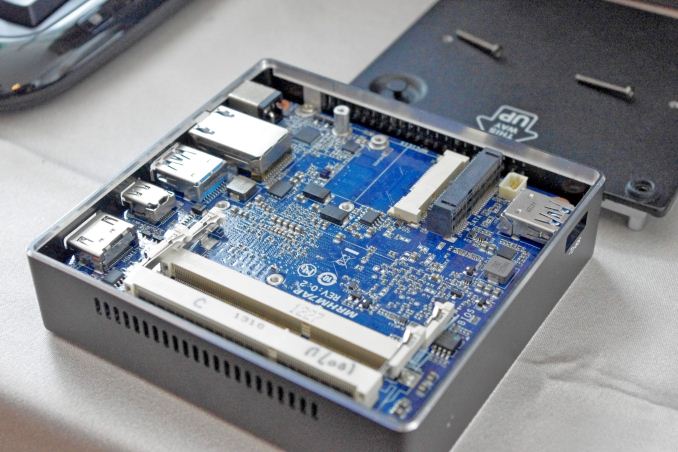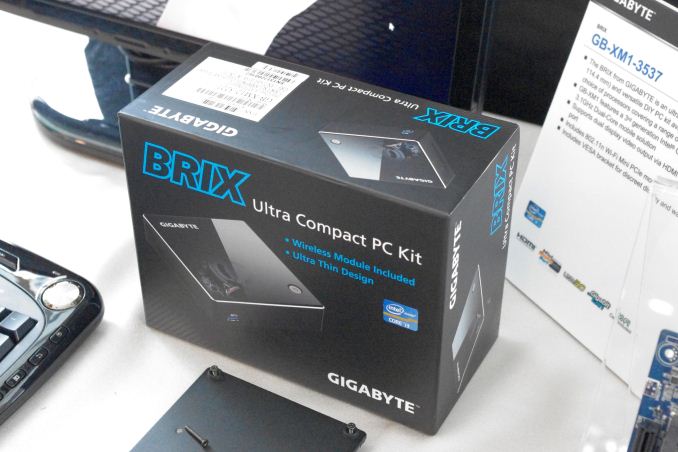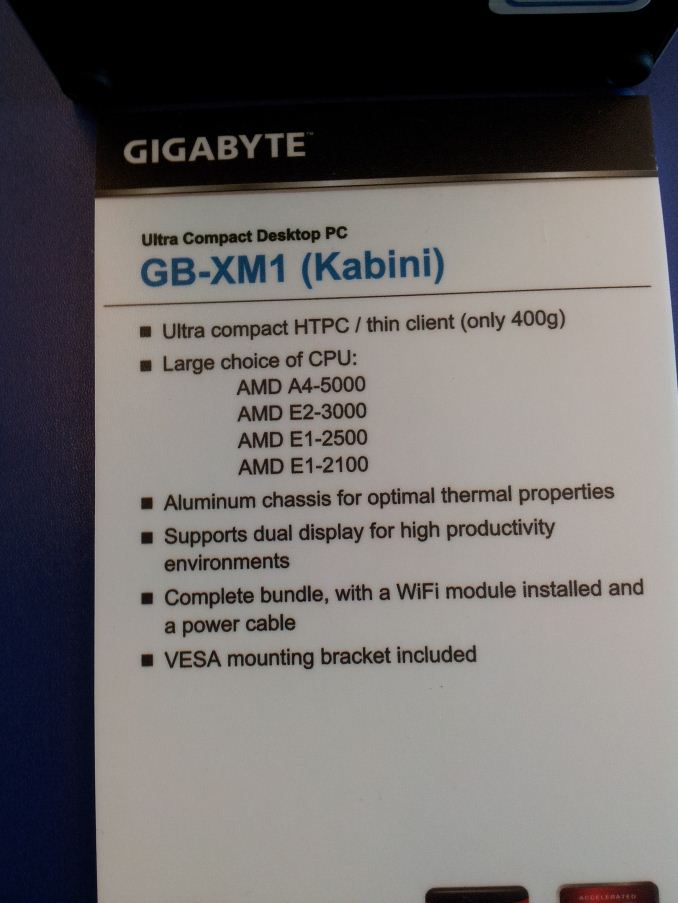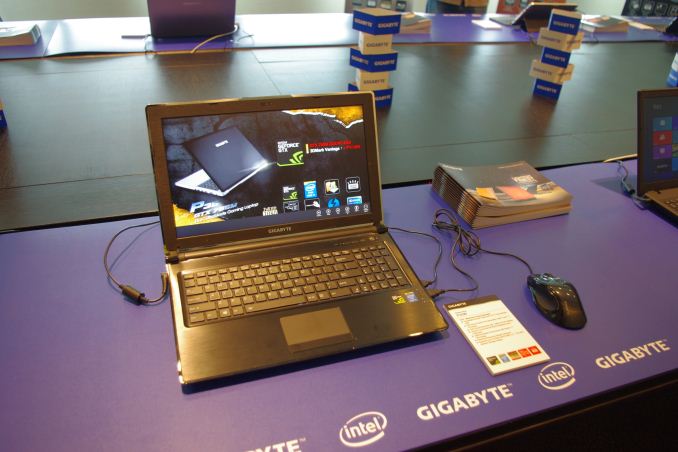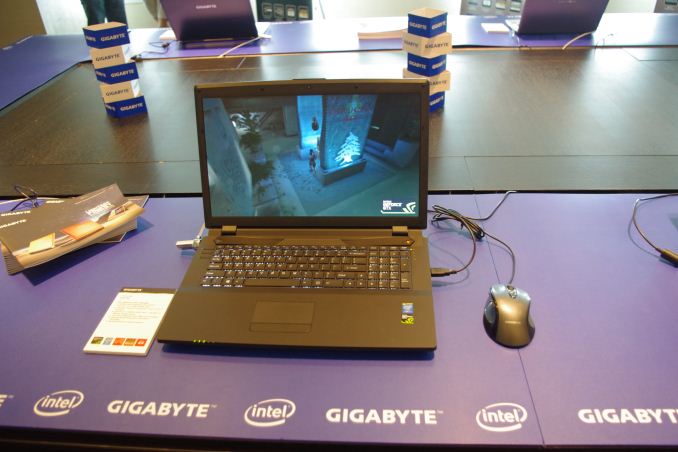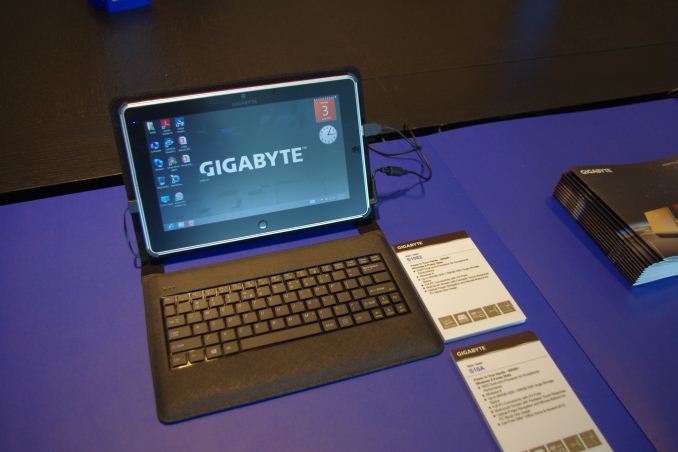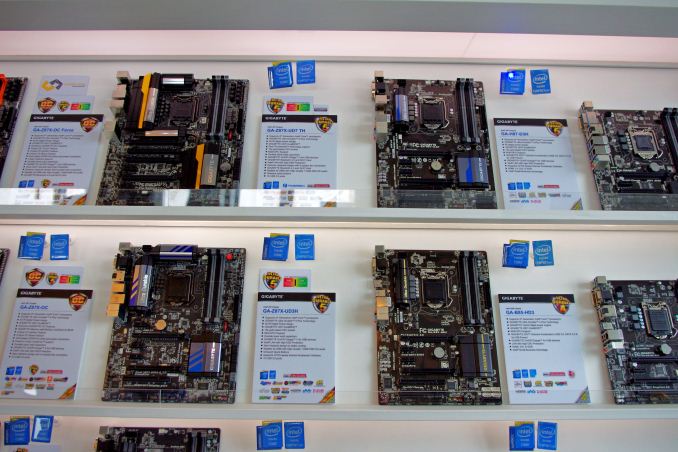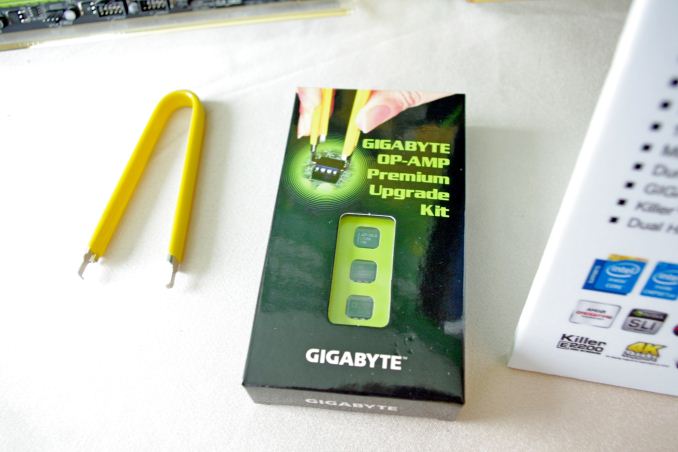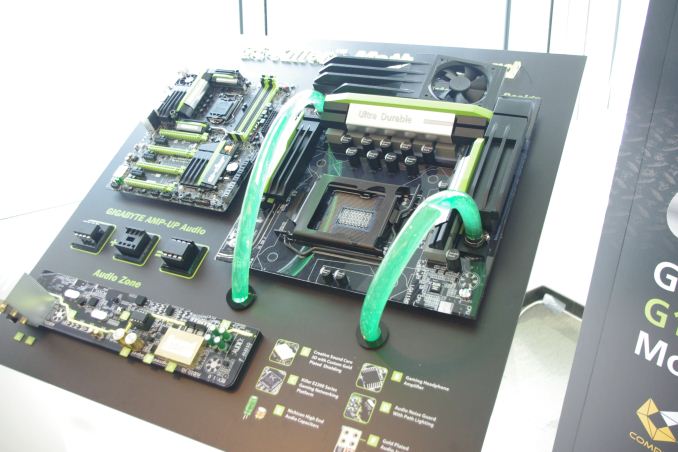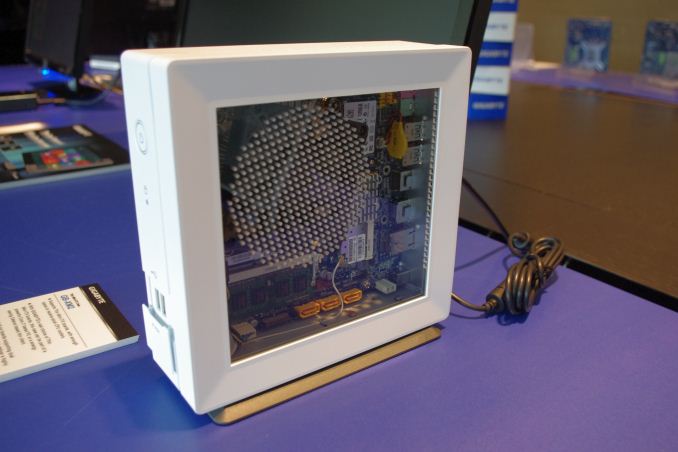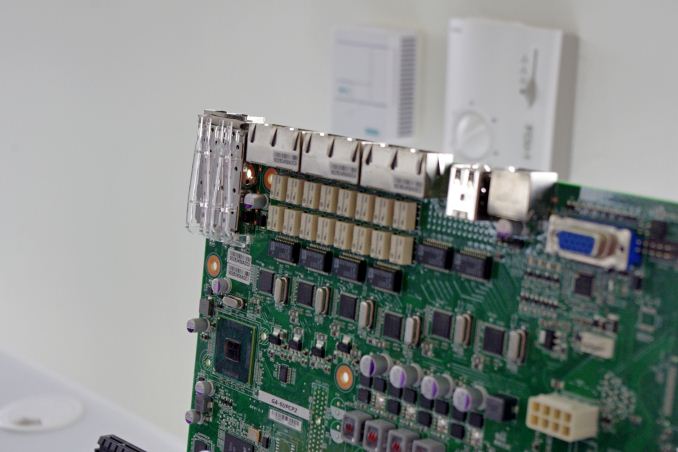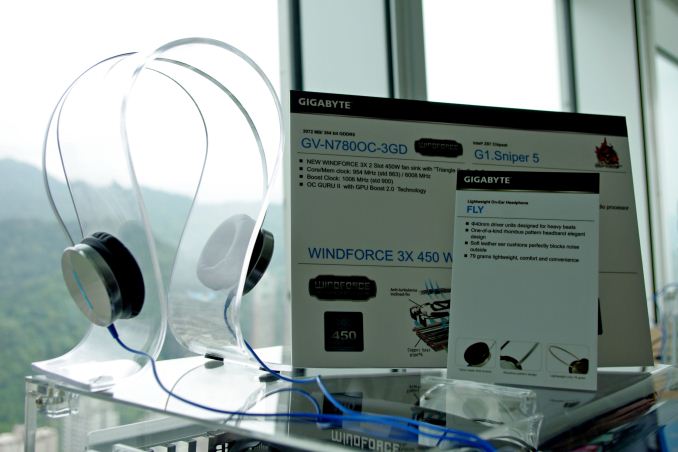
Original Link: https://www.anandtech.com/show/7046/gigabyte-at-the-taipei-101
Gigabyte at the Taipei 101
by Ian Cutress on June 11, 2013 10:00 AM EST- Posted in
- Gigabyte
- Trade Shows
- Computex 2013
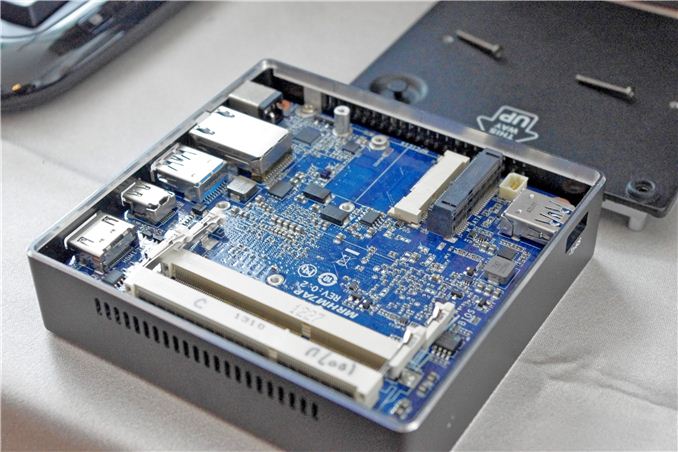
At the Computex show, manufacturers have two purposes – display and explain the new gear, and provide a ‘show’ for media and partners. Part of the Gigabyte show over recent years as one of the main sponsors of Computex is their VIP suite on the 36th floor of the Taipei 101, reserved for media and special guests, with the main Gigabyte booth at one of the show halls nearer to the ground. My first meeting this week was at the Gigabyte VIP Suite, looking at most of the new hardware and talking to the important people who make the decisions.
The Suite
Gigabyte is the sole company at Computex with a suite at the Taipei 101, and they take up the three conference rooms, including the boardroom. In one section we have motherboards and motherboard technologies:
In the boardroom are mobile and SFF devices:
In the final room are the other segments of Gigabyte’s overall business – servers, GPUs, keyboards, mice and IPC.
Being a motherboard company, it would be a little odd not to cover the motherboards. Our preview coverage had a quick look at a few models via leaked images, and Gigabyte met up with Anand for a look at a couple of overclocking/gaming models. But now they are released and in the open, I cannot wait to get a few of these models in for review.
Gigabyte’s full launch ranges has the following models:
| Gigabyte's 8-Series Motherboards at Launch | ||||
|---|---|---|---|---|
| Z87 | GA-Z87N-WIFI | GA-Z87P-D3 | GA-Z87-D3HP | GA-Z87X-D3H |
| GA-Z87M-HD3 | GA-Z87X-OC | GA-Z87MX-D3H | GA-Z87-HD3 | |
| GA-Z87X-UD4H | G1.Sniper 5 | GA-Z87M-D3H | GA-Z87X-OC Force | |
| GA-Z87X-UD5H | G1.Sniper M5 | GA-Z87X-UD3H | ||
| H87 | GA-H87N-WIFI | GA-H87M-HD3 | GA-H87-HD3 | GA-H87M-D3H |
| GA-H87-D3H | ||||
| B85 | GA-P85-D3 | GA-B85M-HD3 | GA-B85M-D3H | GA-B85-HD3 |
In terms of naming schemes:
Z87X = SLI Support
Z87M = microATX
Z87N = miniITX
UDxH = Ultra Durable with Digital Video Output
UP = Ultra Durable 5 with IR355x 60A ICs
HD = Digital Video Output
D3H = D3 with Digital Video Output
D3HP = D3H with USB 3.0 Hub
At the suite itself, as in previous years, Gigabyte have the ‘wall of motherboards’, showcasing all the models listed above as well as a few not officially launched yet, such as the Z77X-UP7 TH and the B5 Sniper. The Z87X-UP7 TH in name and features suggests that Gigabyte are moving fully to the ‘OC’ range for overclocking motherboards and the UP7 now sits as a prosumer model at the top of the product stack alongside the Z87X-OC Force and G1.Sniper 5.
As it is the top model, we get a dulled gold theme to complement the gold of the UD5H, red theme of the UD4H and blue theme of the UD3H. Alongside Thunderbolt connectivity, the UD7 TH looks to follow some of the same principles of the Z87X-OC Force but more in a stability sense rather than an overclocking sense – we have fewer of the overclocking buttons and options (some are still present) but the same PCIe layout, PLX chip and 16-phase power delivery combination.
So when the G1.Sniper B5 caught my eye I was a little surprised, but it does make sense from a user point of view – if you want a gaming oriented motherboard without overclocking, then perhaps a B85 chipset model would be more cost effective. The downside of B85, aside from overclocking, is the lack of SLI on the regular G1.Sniper 5, as well as an adjustment to the rear IO connectivity options. This model also features the adjustable OP-AMP audio similar to the high end model.
The OP-AMP kit features three additional ICs aside from the two that appear into the box, and should be on sale for around $50.
On the server motherboard side, Gigabyte had a few models on display, such as a dual processor motherboard in an ATX form factor:
While still in the early stages of design, here is a dual Sandy Bridge-E motherboard in ATX, designed for a smaller chassis. I was told there is still work to be done regarding the design of the PCIe lanes (we clearly are not getting much GPU action here), but it should be available via regional sales offices later this year.
Intel’s Next Unit of Computing (NUC) was designed to be the starting platform for something smaller. The combination of integrated graphics on mobile CPUs becoming better, SSDs moving to mSATA size, and half-height mini-PCIe cards for WiFi and other connectivity meant that there was potential in having a DIY unit small enough to affix onto the back of a monitor, without people tied down to one particular OEM’s deal on storage or memory. While Intel’s NUC is out and for sale today at a price point with a small premium over a self-build with a desktop CPU, the ‘competition’ between OEMs to build their own designs, like in the Ultrabook segment, has been relatively slow. The BRIX is one of the first parts into the ecosystem developed by a manufacturer other than Intel.
The BRIX (bricks) is actually named after Colin Brix, one of Gigabyte’s marketing staff at HQ, who frequently appears in US media video coverage at events like Computex, or showing up with Anand to talk about motherboards. Despite Colin being based in the motherboard section of the company, the BRIX is actually a product design from the server department. I was able to speak to Yann Gerardi from the server team about the BRIX.
The BRIX is a full aluminum chassis designed to be smaller than the NUC, with bundled dual band WiFi but customizable in terms of memory and mSATA. Depending on the CPU the Ivy Bridge BRIX is currently on sale for CAD$320-560.
In terms of future revisions of the BRIX, we reported on the Kabini and Haswell models to also be launched later this year.
Gigabyte is a company that is attempting to diversify. The graphics division is almost a different company altogether within the corporate structure, where perhaps synergy between other areas could be improved upon. The Gigabyte GPU range has been known in recent generations with their Windforce coolers, and for Computex we saw the next evolution of Windforce which removes the fans on the top of the GPU and puts larger fans on the GPU Cooler.
Gigabyte is also stepping more and more into the mobile space, and while I personally see very few Gigabyte mobile devices out and about, the product stack at Gigabyte is diversifying – I was told that Gigabyte is moving more into making their own models rather than relabeling OEM versions, which can only be a good thing by putting some expertise in the PC market to good use. Several models around the suite caught my eye:
First up is the P25W, a 15.6” Haswell laptop with a GTX 770M, full 1080p and support for two 2.5” SSDs and an mSATA for caching or RAID.
The P27K is the 17” variant of a similar build, but with a GTX 765M. Both feature backlit keyboards and NVIDIA Optimus, and will weigh in at almost 3 kg.
Gigabyte also had on show a ‘Power Slate’, which is essentially a Windows 8 tablet with adjoining keyboard but with a 256GB SSD / 500 GB HDD storage. Both Intel and AMD variants were listed, with IO and connectivity ports part of the tablet.
The Future
For our coverage this week Gigabyte have a few more places for us to explore. At the weekend Gigabyte have an overclocking event back at HQ planned for some of the world’s top overclockers which we will be covering, interviewing their chief in-house overclocker HiCookie and investigating at their new ‘Gigabyte OC Lab’. We also have lined up an interview or two with a couple of people who make the important decisions, involving Senior R&D and/or Sales. As with most companies, the sales department tells R&D what the customers want, and R&D discuss what is actually possible. Also marketing is also dealing with end users and media such as AnandTech, asking what we think about all the products – it becomes a push from all sides as to what gets into the products in the end. But AnandTech is being given the opportunity to talk to the senior staff, so watch this space.
Image Gallery

